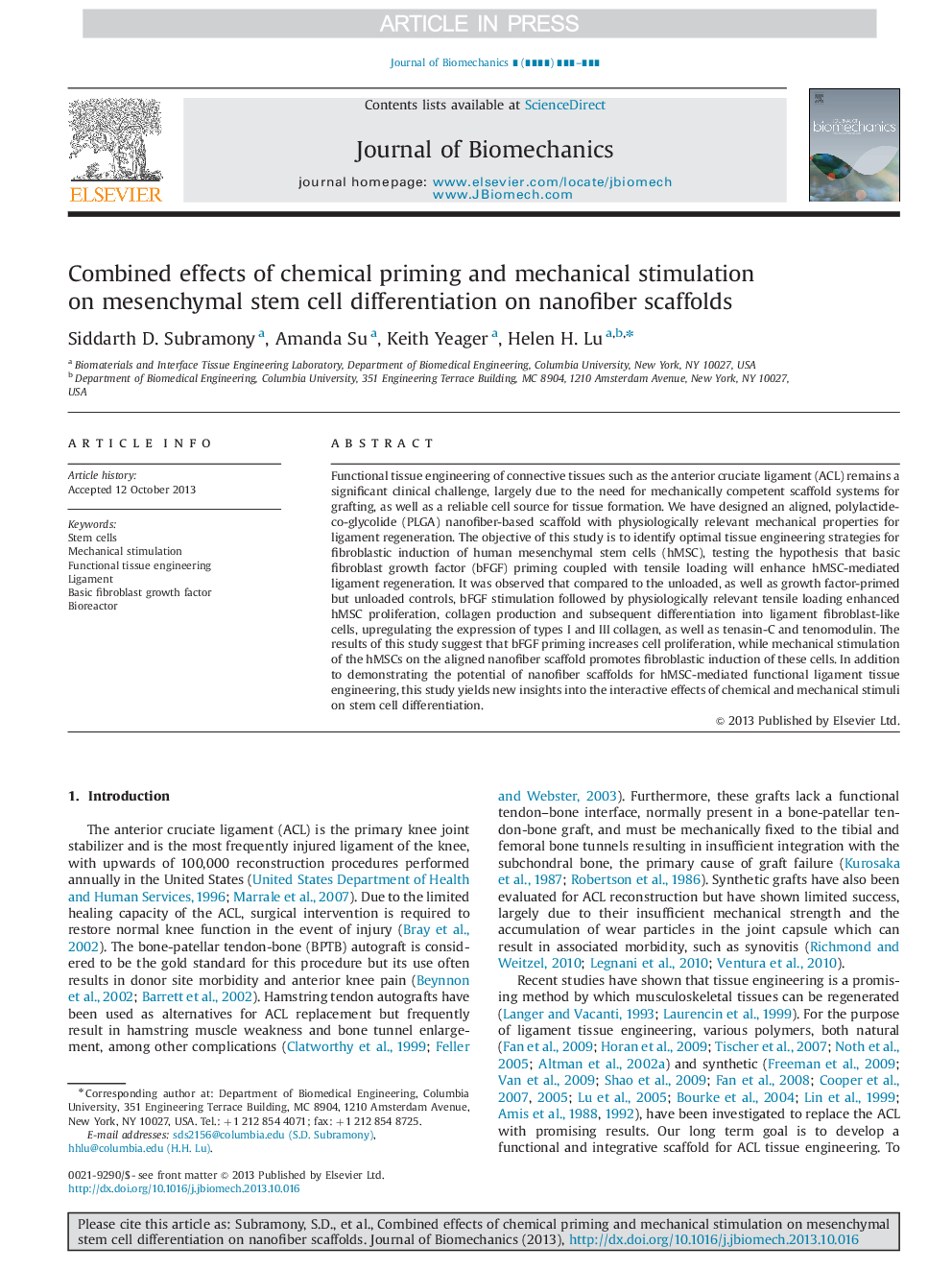| Article ID | Journal | Published Year | Pages | File Type |
|---|---|---|---|---|
| 10432083 | Journal of Biomechanics | 2014 | 8 Pages |
Abstract
Functional tissue engineering of connective tissues such as the anterior cruciate ligament (ACL) remains a significant clinical challenge, largely due to the need for mechanically competent scaffold systems for grafting, as well as a reliable cell source for tissue formation. We have designed an aligned, polylactide-co-glycolide (PLGA) nanofiber-based scaffold with physiologically relevant mechanical properties for ligament regeneration. The objective of this study is to identify optimal tissue engineering strategies for fibroblastic induction of human mesenchymal stem cells (hMSC), testing the hypothesis that basic fibroblast growth factor (bFGF) priming coupled with tensile loading will enhance hMSC-mediated ligament regeneration. It was observed that compared to the unloaded, as well as growth factor-primed but unloaded controls, bFGF stimulation followed by physiologically relevant tensile loading enhanced hMSC proliferation, collagen production and subsequent differentiation into ligament fibroblast-like cells, upregulating the expression of types I and III collagen, as well as tenasin-C and tenomodulin. The results of this study suggest that bFGF priming increases cell proliferation, while mechanical stimulation of the hMSCs on the aligned nanofiber scaffold promotes fibroblastic induction of these cells. In addition to demonstrating the potential of nanofiber scaffolds for hMSC-mediated functional ligament tissue engineering, this study yields new insights into the interactive effects of chemical and mechanical stimuli on stem cell differentiation.
Keywords
Related Topics
Physical Sciences and Engineering
Engineering
Biomedical Engineering
Authors
Siddarth D. Subramony, Amanda Su, Keith Yeager, Helen H. Lu,
